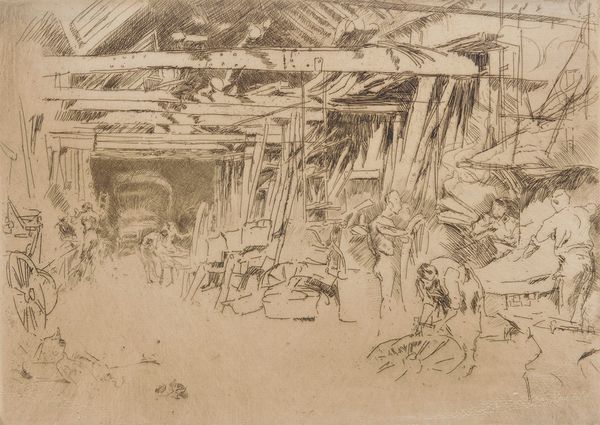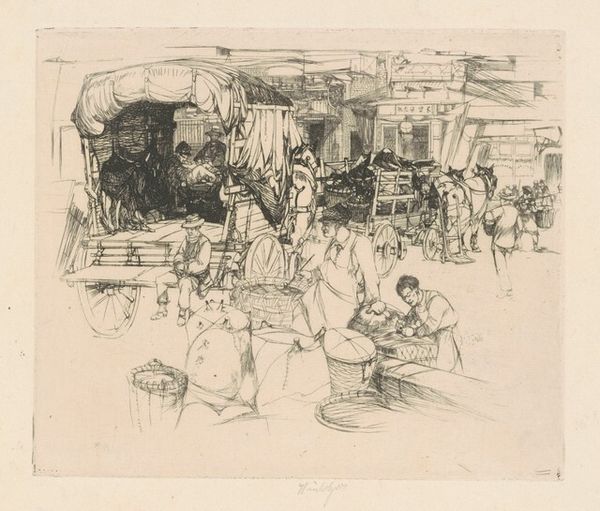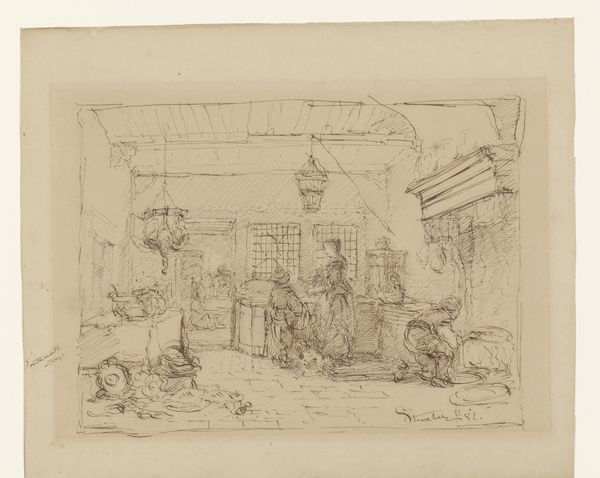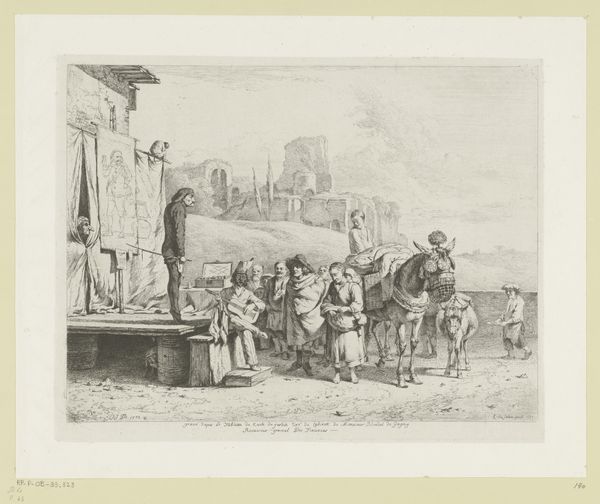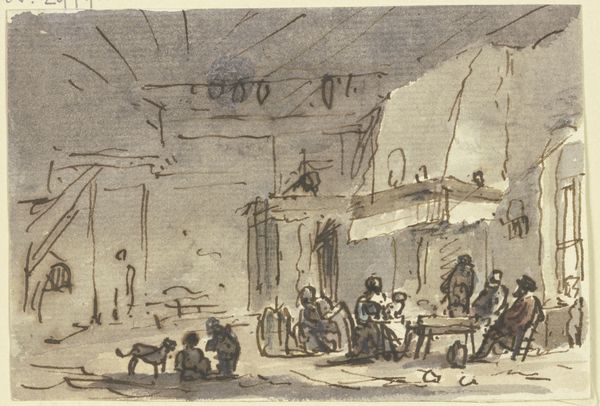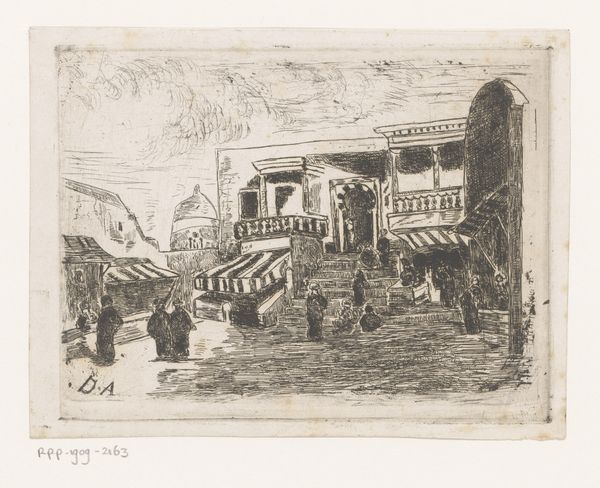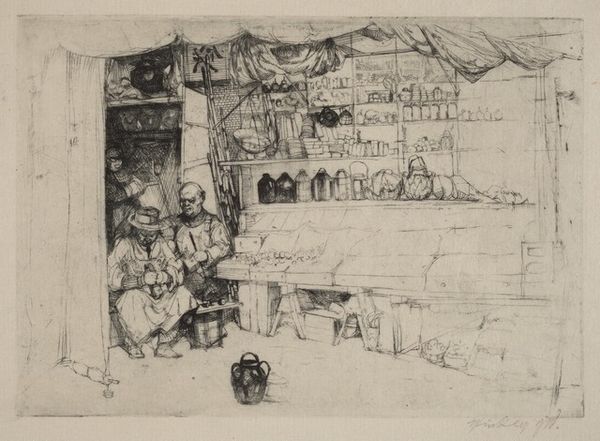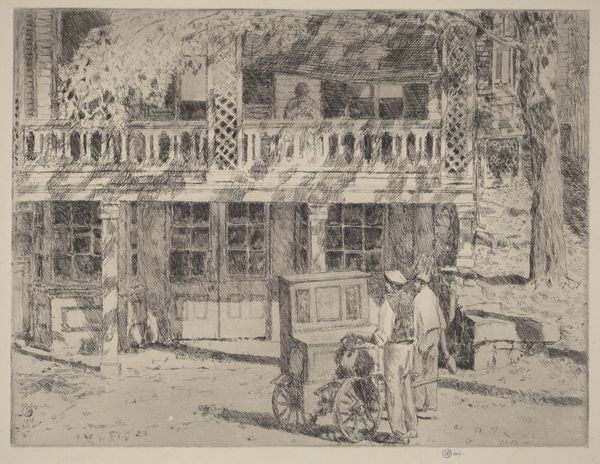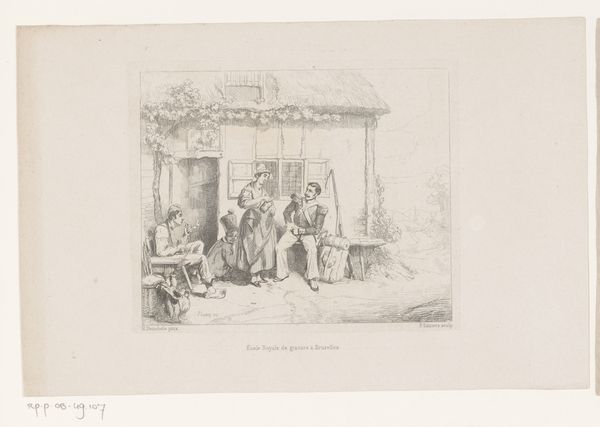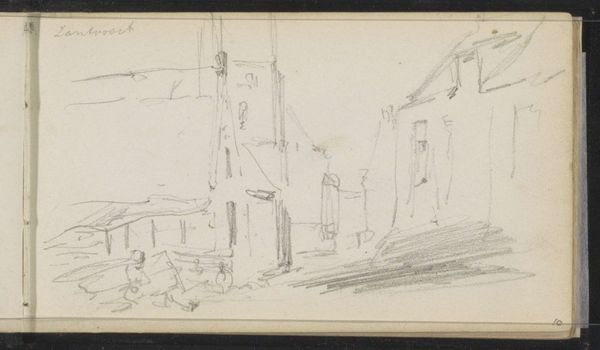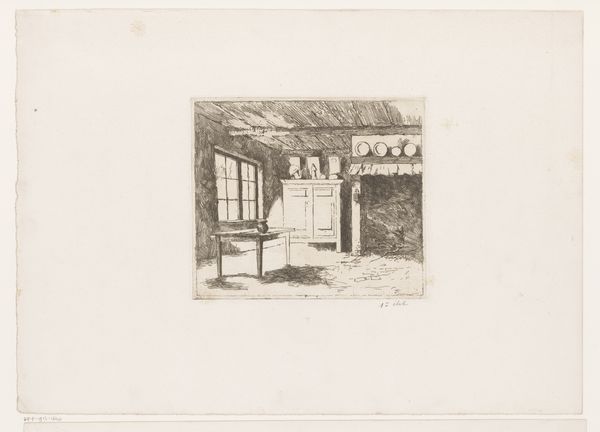
drawing, pencil
#
drawing
#
landscape
#
romanticism
#
pencil
#
orientalism
#
cityscape
Copyright: Public domain
Editor: This is John Frederick Lewis's "A Café on the Bosphorus," created in 1838 using pencil. It’s amazing to see this detailed scene captured with just graphite. There's such a quiet, contemplative mood about it... like a stage set waiting for a play to begin. What stands out to you in this drawing? Curator: It whispers to me of a world observed, rather than experienced, you know? Lewis, like many Orientalist artists, found a strange kind of truth by documenting what was filtered through a Western lens. He's fantastic at the fine details - look at the way the light drapes over the rough textures of the building, that ragged awning casting such intricate shadows, almost as if hiding and revealing at once. Editor: Yes, I noticed the light too! It really emphasizes those details. And you're right, there's definitely a Western perspective influencing how the scene is portrayed. It's not just documenting; it's crafting a certain image. How does the style play into that? Curator: Precisely! His romantic inclination leads him to prioritize emotion over strict ethnographic record. What do we feel when gazing at the Bosphorus through his eyes? Perhaps a hint of longing for something… distant and unknowable? The meticulously crafted cityscape melts slightly into dreamy haziness the further we go back into the picture plane. And isn't it ironic that this yearning comes from a picture perfect recreation of everyday life. I think there are many levels of truth here if we are ready to discover them. Editor: I see what you mean – the blurring effect definitely contributes to the dreaminess. Thanks for sharing that. I'll definitely look at this work differently now, understanding the influence of Orientalism and Romanticism at play. Curator: My pleasure! Perhaps you will become our next great expert, one whose vision changes our current perspective, how thrilling.
Comments
No comments
Be the first to comment and join the conversation on the ultimate creative platform.
